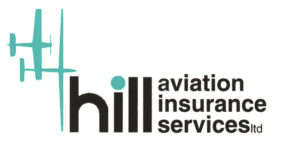Safety
The British Gliding Association, which includes all member clubs, is committed to safe practices with the objective of facilitating a sport gliding environment where the levels of risk are as low as reasonably practicable. This will be achieved through the implementation of an effective safety management system and a process of continuing improvement.
The BGA gives priority to not harming any third parties, continuing to reduce the number of gliding accidents, and avoiding airspace infringements.
By adopting a Safety Management System that meets the needs of its clubs and the sport, the BGA aims to move beyond the traditional reactionary systems to try to predict areas of exposure.
The BGA Safety Management System manual documents the BGA risk management approach and was formally adopted by the BGA Executive Committee on 14th January 2014 and is reviewed annually.
Gliding participants are subject to regulation and self-regulation ie BGA rules and guidance, which include topics like supervision, training, emergency procedures and accident investigation. You can read more here.
How safe is gliding?
Gliding is an adventurous air sport and as such is not as safe as travelling on a commercial airliner. If you are looking for a totally risk free sport, gliding may not be right for you. The BGA gives priority to not harming any third parties, continuing to reduce the number of gliding accidents, and avoiding airspace infringements.
Just Culture
BGA safety work takes place within a Just Culture, which is ‘an atmosphere of trust in which people are encouraged (even rewarded) for providing essential safety-related information, but in which they are also clear about where the line must be drawn between acceptable and unacceptable behaviour’ (Professor James Reason, 1997).
What do I do if I have a safety concern?
If you have an immediate safety concern, don’t assume someone else has either noticed or will deal with it. In the first instance talk to the person or people involved. And where appropriate or if in doubt, follow it up with the club CFI or safety officer.
Awareness and Education
A key aspect of keeping safe in flying is understanding the environment we fly in, the various issues that can threaten our safety, the errors we can make as humans, and how to avoid or manage the risks.
Click here to view the awareness and education information.
Reporting Occurrences
The BGA encourages a Just Culture’ which encourages free and frank reporting and in turn provides valuable data that helps to identify trends. Reporting near accidents, incidents, accidents and other unsafe situations provides really useful data that helps others avoid problems in the future. Some accidents must be reported.
Click here to view the occurrence reporting information.
Click here to complete an occurrence report
Health and Safety Legislation
Health and safety law does not cover safety matters arising out of the sport or activity itself, ie flying gliders. Note that a duty of care under the common (civil) law may apply.
Click here to view our Health & Safety information.
Club Safety Officer
The CSO has an important role reporting directly to the club chair. Our Club Safety officer toolkit webpage includes:
Role description
Introductory briefing
Support and other information including the club safety review.
Click here to view the Club Safety Officer toolkit webpage.
BGA Safety Committee
The BGA Safety Committee reports to the BGA Executive Committee. Safety Committee work and communication takes place on an ongoing basis throughout the year. The Safety Committee meets periodically and the meeting notes that have been finalised following BGA Executive Committee consideration can be made available on request.
The Safety Committee includes the Accountable Manager, Safety Data Analyst, Chief Technical Officer, Training Standards Manager, Safety Officer co-ordinator, and invited subject matter experts.
Safety Awards
There are two prestigious safety awards that may be presented annually by the BGA.
The Bill Scull Safety Award – In recognition of an individual contribution to flight safety
The late Bill Scull was a highly experienced glider pilot who served the BGA in several leadership roles, within each of which Bill was dedicated to improving flight safety.
The Saundby Sword – In recognition of a gliding club or group contribution to flight safety
The late Dr Peter Saundby was a highly experienced RAF flight surgeon, medical practitioner, BGA and club director, and glider pilot who generously donated an RAF Officers ceremonial sword as a BGA safety award. The sword was previously owned by Peter’s late father, Air Vice Marshal Robert Saundby, who was a strong and practical advocate for flight safety during his wartime service in RAF Bomber Command.


